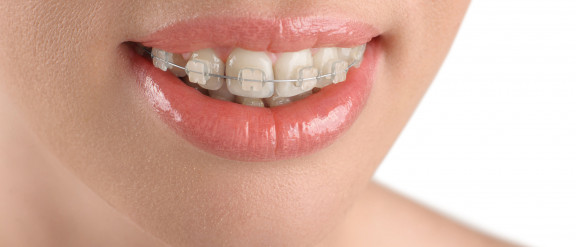
So, you’ve made a choice and now had your braces fitted. Congratulations! You are on an exciting journey to a healthy, straight smile.
If you’ve opted for lingual braces (behind the teeth), removable clear aligners, ceramic braces, or braces that have tooth-coloured wires and brackets or that straighten teeth quickly you already know that they won’t impact too much on your appearance.
But, what of caring for your teeth now you are having orthodontic treatment? How easy will it keep your mouth clean?
The truth is, you may have to re-learn how best to brush your teeth while wearing braces.
Undergoing any orthodontic treatment – whatever the system – requires us to be hugely meticulous with our dental hygiene (throughout the day) and we will need to protect the appliance as well as our teeth – clean both thoroughly.
Your mouth may be a little tender when you first get them fitted – but a course of painkillers should help until the pain disappears and this is usually within seven days.
But, brushing teeth is as important as ever – so be sure to concentrate on the area between the braces and the gums, where food may lurk and lead to bacteria and plaque build-up.
This can cause unsightly staining if not regularly removed – a bit of a letdown to find when you finally have your braces removed!
Take note, the plaque is invisible so just because you cannot see anything between the teeth and braces, it doesn’t mean there isn’t anything there to clean away.
Your dental hygienist may recommend small interspace brushes, such as those from TePe, or a Philips Sonicare electric toothbrush and a Philips Sonicare AirFloss Pro – both hugely effective at cleaning between the tooth and the wire, up against the brackets and so on.
Philips Sonicare toothbrushes are designed to gently brush and glide over the surface of orthodontic work, using longer bristles and smaller brush heads to clean hard-to-reach areas more precisely. The Philips Sonicare AirFloss Pro then reaches between the teeth.

Use a mirror to check you are not missing anywhere – and see a hygienist regularly, who can help you achieve optimum oral health care while undergoing orthodontics.
The next tip involves eating between meals. In a nutshell, don’t! Aim to avoid any food or drinks that contain sugar (natural or added). It’s easy to snack but regular grazing doesn’t give the teeth time to recover from the sugar and acid attacks so be mindful of the effects. And, of course, hard foods, such as crusty bread, should be eaten with great care or avoided, too. Any breakages may mean a delay in the treatment. And avid chewing gum – it makes a nasty mess of braces as you can imagine!
And here’s another thing – be sure to visit your dentist every six months during treatment as an orthodontist will not necessarily check for other problems.
Keep all appointments and, should appliances become loose or broken, get in touch with your treating orthodontist or dentist immediately.
Related Treatments

Ceramic Fixed Braces
Ceramic braces are braces that are fixed to the te...

Damon Braces
Compared to normal orthodontics, Damon Braces use ...

Fastbraces
Fast Braces are a relatively new and innovative or...

Incognito Braces
While traditional braces, commonly referred to as ...

Inman Aligner
The Inman Aligner is a solution that helps to alig...

Invisalign
The Invisalign System straightens teeth using a se...

Lingual Braces
These devices are almost the same as fixed wire br...

Removable Braces (Clear Aligners)
If your teeth require only small corrections to ma...

Six-Month Smiles
The Six-Month Smiles system can provide fast and e...

